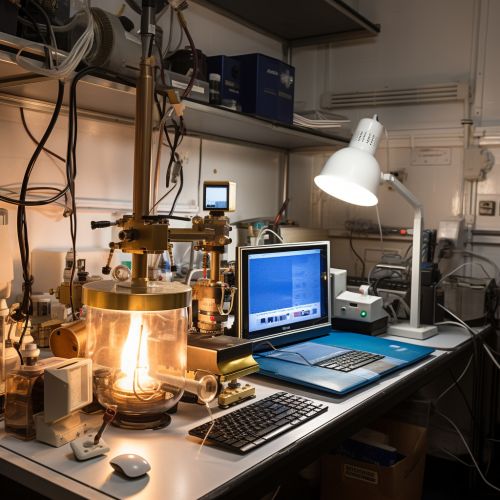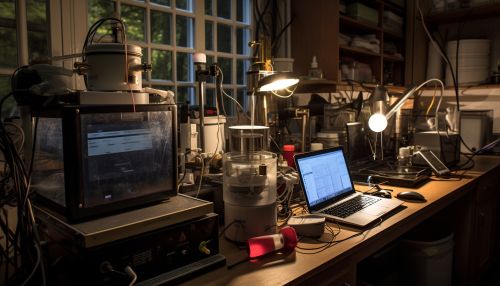Microkelvin
Introduction
The term Microkelvin refers to one millionth (10^-6) of a Kelvin, a unit of temperature measurement in the International System of Units (SI). This unit is commonly used in scientific research fields such as Astrophysics and Condensed Matter Physics, where extremely low temperatures are necessary for certain experiments.
Microkelvin and Absolute Zero
In theory, the lowest possible temperature is Absolute Zero, which is 0 Kelvin or -273.15 degrees Celsius. At this temperature, all molecular motion ceases. However, reaching absolute zero is theoretically impossible due to the Third Law of Thermodynamics. Scientists can only strive to get as close as possible to this temperature. In this context, the microkelvin unit becomes significant as it allows for precise measurement and control of extremely low temperatures.


Techniques to Achieve Microkelvin Temperatures
Several techniques have been developed to achieve and measure temperatures in the microkelvin range. These include Dilution Refrigeration, Magnetic Cooling, and Laser Cooling. Each of these techniques has its own advantages and limitations, and the choice of method depends on the specific requirements of the experiment.
Dilution Refrigeration
Dilution refrigeration is a technique that uses a mixture of two isotopes of helium: Helium-3 and Helium-4. This method can cool down a system to temperatures below 1 millikelvin, reaching into the microkelvin range.
Magnetic Cooling
Magnetic cooling, or adiabatic demagnetization, is a process where a magnetic material is cooled by exposing it to a magnetic field and then gradually reducing the field. This method can achieve temperatures in the microkelvin range.
Laser Cooling
Laser cooling is a technique that uses the interaction of atoms with laser light to cool a gas to temperatures in the microkelvin range. This method is commonly used in the field of Atomic Physics.
Applications of Microkelvin Temperatures
Microkelvin temperatures are crucial in several areas of scientific research. These include the study of Superfluidity, Superconductivity, and Quantum Computing.
Superfluidity
Superfluidity is a state of matter that occurs at very low temperatures, in the microkelvin range. In this state, a fluid can flow without any resistance.
Superconductivity
Superconductivity is a phenomenon where a material can conduct electricity without resistance. This state is achieved at very low temperatures, often in the microkelvin range.
Quantum Computing
Quantum computing, a field that leverages the principles of Quantum Mechanics, often requires operating environments at microkelvin temperatures to maintain the quantum state of particles.
